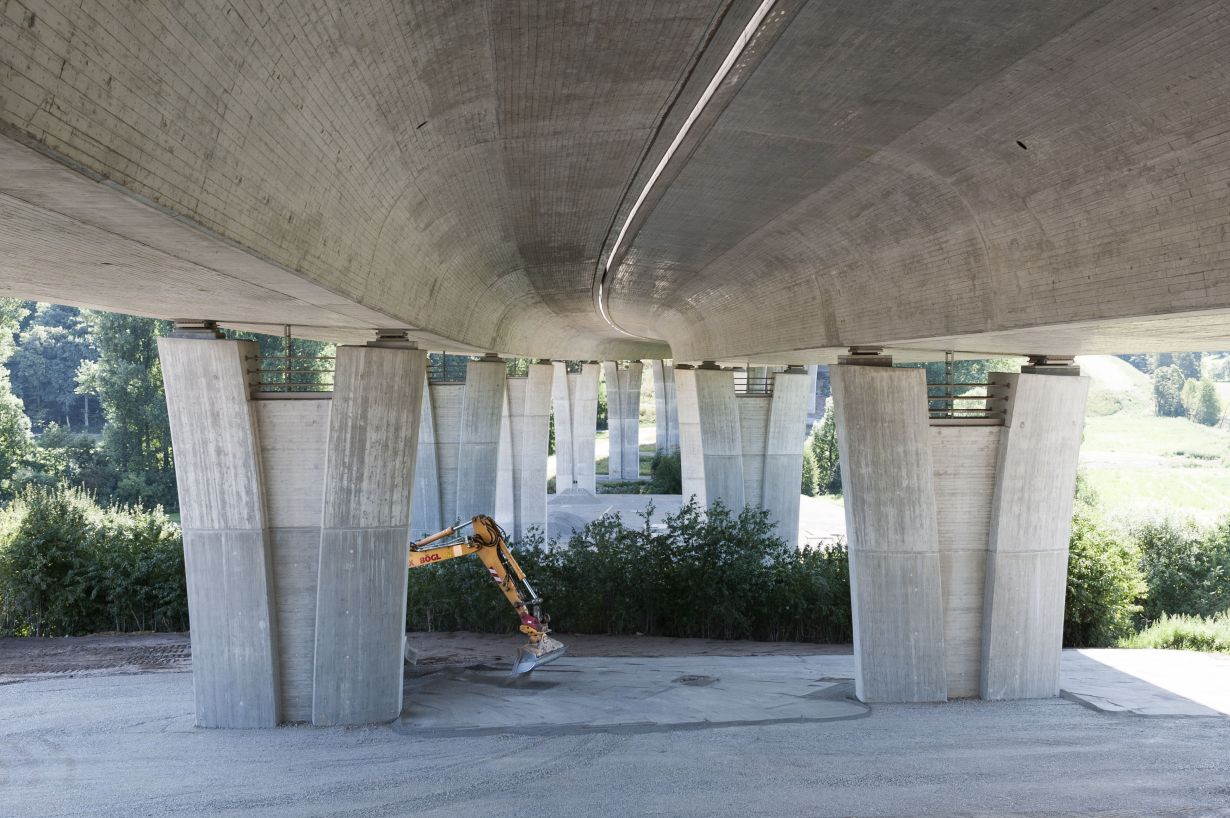The collapse of the motorway bridge in Genoa in August this year, the many restrictions of the use of bridges, and the critical state of bridges used by long-distance traffic in Germany have shifted the remaining service life of bridges into the focus of public discussion. Researchers of Karlsruhe Institute of Technology (KIT) are now developing a new concept for determining the state of bridges and the early detection of minor structural changes.
The strongly increasing car and truck traffic often causes the load on the aging bridges to grow to an extent that was not foreseeable when they were constructed. Early damage of the structure can hardly be detected even with a large expenditure. Consequently, the real condition of a bridge often remains unnoticed. Measures to refurbish bridges are often taken very late and under time pressure. To counteract this problem, researchers of KIT are working on a method to determine the real condition of bridges in due time without having to interfere with the structure.
It is a huge task: the about 40,000 bridges of the federal long-distance road network have a total length of about 2,100 km. They cross roads, railways, water bodies, or valleys and are indispensable elements of the critical traffic infrastructure. Their damage causes traffic jams, detours, and, hence, environmental pollution and economic losses. A simple method to determine the condition of bridges might help save a lot of money. Within the ZEBBRA project, Dr. Sina Keller of KIT’s Institute of Photogrammetry and Remote Sensing now wants to solve the problem with radar sensors and intelligent algorithms. “When cars drive onto a bridge, they cause vibrations. These movements are recorded with highly precise radar instruments,” the mathematician says. Specially developed computer algorithms analyze the radar signals reflecting the vibration behavior of the bridge. These algorithms are developed in cooperation with researchers of KIT’s Institute for Automation and Applied Informatics. “Deviation of the measurements from the reference vibrations of the bridge indicate structural damage,” Keller says. The method helps to precisely locate the deviations and to detect damage in single bridge segments, such as pillars or road sections.
The researchers plan to use instruments that can be transported easily. Measurements will be made directly on site during bridge operation and without obstruction of traffic. Sensors do not have to be installed firmly. The inspection method will be inexpensive and easy to use. It is supposed to help transportation and construction authorities plan refurbishment over longer terms and in a more specific way.
The ZEBBRA project will expire in 2021 and is funded by the Federal Ministry of Education and Research with a total of EUR 1.5 million. Other partners of the project are ci-Tec GmbH, Karlsruhe, and the Office for Structural Mechanics, Coburg.
More information: https://www.sifo.de/files/Projektumriss_ZEBBRA.pdf (in German only)
In close partnership with society, KIT develops solutions for urgent challenges – from climate change, energy transition and sustainable use of natural resources to artificial intelligence, sovereignty and an aging population. As The University in the Helmholtz Association, KIT unites scientific excellence from insight to application-driven research under one roof – and is thus in a unique position to drive this transformation. As a University of Excellence, KIT offers its more than 10,000 employees and 22,800 students outstanding opportunities to shape a sustainable and resilient future. KIT – Science for Impact.

